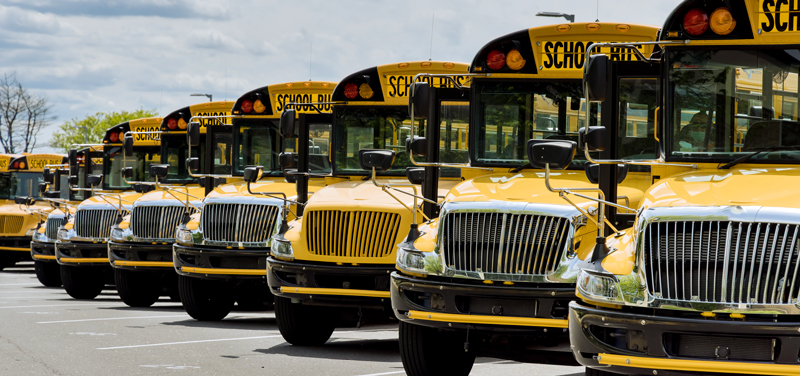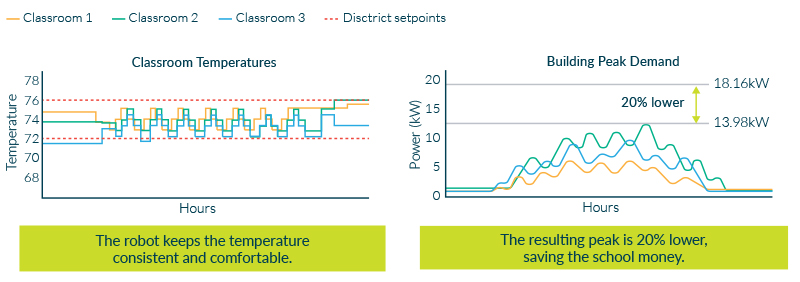Washington aims to reduce carbon emissions by at least 25% below 1990 levels by 2035. This rapid transition to clean electricity means big changes are underway for utilities. Power systems are being reshaped by transportation, building infrastructure, and intermittent renewable generation. Utilities must also accommodate increasing customer-sited generation coming from solar PV, batteries, and other sources. Both present challenges to traditional utility interconnection processes and reliability.
CEL has partnered with Franklin Pierce School District (FPSD) and Tacoma Power to turn disruption into opportunity. The joint Bus Barn Microgrid Demonstration Project will demonstrate how local schools and districts can more seamlessly integrate customer-sited generation and improve local resilience while decarbonizing transportation, buildings, and the grid.

FPSD has over 60 buses and vehicles. These vehicles park overnight at the Bus Barn located at Franklin Pierce High School. The district has already purchased several electric buses and, over the next 15 years, they intend to electrify their entire fleet. They also intend to install 100kW of solar on the high school’s roof. These plans have multiple tangible benefits for the school, the district, and the community, including:
However, without innovative controls and operations, these seemingly positive developments present a conflict between normal utility operations and the imperative to decarbonize. In typical configurations, building and transportation electrification strain utility distribution infrastructure. Together, full fleet electrification combined with FPSD’s heating and cooling needs would overwhelm the school’s meter. This would cause power issues and require frequent reconfiguration of the local distribution system.
To mitigate this concern, FPSD is deploying CEL’s technology to lower peak demand (kW) and better leverage its renewable sources. The CEL robot (which the district has named “Fannie” 🤖 because she controls the fans!) reduced the district’s HVAC load peak by more than 20%. This will reduce energy bills and also the size of the storage and generation necessary for backup, prolonging power duration during outages.

Tacoma Power is observing whether projects like this demonstrate the potential to integrate the robot into all commercial campuses as a means to level HVAC loads so that building owners can more cost-effectively electrify and size non-emitting generation and storage assets for resilience. The pilot will satisfy both FPSD’s need for less carbon-intensive operations and the utility’s need to meet state decarbonization objectives and operate within its existing distribution capacity while effectively integrating renewable energy.

As part of this project, the team held community meetings to gather input and improve understanding of school energy usage and the benefits of microgrids. Our process educated community members about the energy resources schools provide and gave them deeper insight into what it takes to support these resources during outages. Equipped with this understanding, community members engaged in thoughtful and productive discussions surrounding resources and resiliency.
CEL leveraged match funding and in-kind support from Tacoma Power to host a six-hour Smart and Resilient Schools (SRS) Energy summit for the community. The SRS Summit comprised interactive educational activities. Attendees included students, teachers, and building maintenance professionals from elementary and secondary school districts, as well as nontechnical community members. We wanted to see how stakeholder preferences interact with smart building control of space conditioning, EV charging, electric buses, and on-site solar and battery systems. We learned a lot from these discussions (see sidebar) that will inform utilities' and CEL's ongoing work.
RELIABILITY: Parents are heavily impacted by outages when kids are sent home from school early. Building operators' primary responsibilities are serving occupants followed by keeping costs low and following district policies. This is difficult to do with aging equipment.
KNOWLEDGE: Even the best informed have less insight than they expected into the complexities and nuance of the services provided and the energy sources that they come from.
CONTROLS & SYSTEMS: Customers took great interest in the load shifting from HVAC and other building systems to address emergencies.
RESPONSIBILITY: Building operators are unclear on the county's expectations of schools' responsibility in the context of a wider disaster.
EDUCATION: Customers were interested in replicating this learning to others and exploring longer-duration outages and other scenarios.
RESILIENCY: Building systems need to be more resilient and control systems need to be easy to use and seamless to customers.
GENERATION: There are energy generation alternatives that have different carbon costs and advantages. Solar is not the only good solution.
AIR SYSTEMS: Customers want to learn more about the difference between DOAS and HVAC and the advantages of the two.
MICROGRID: Customers would enjoy going through and understanding the integration process for all the different systems discussed.
USAGE: Schools use energy over a wider period of time than just when students and staff are in the building.
CEL is building an IoT & Software as a Service control platform for building operators who find it complex, frustrating, and very expensive to meet new building energy goals. We install wireless sensors, equipment controllers, and user-friendly software powered by machine learning to autonomously predict and efficiently control how and when new and existing building equipment is operating so that buildings use less energy and more of what they do use is powered by renewables. Our technology is applicable to many different use cases and allows customers to more easily integrate additional technologies like electric vehicles and batteries while reducing energy consumption.
